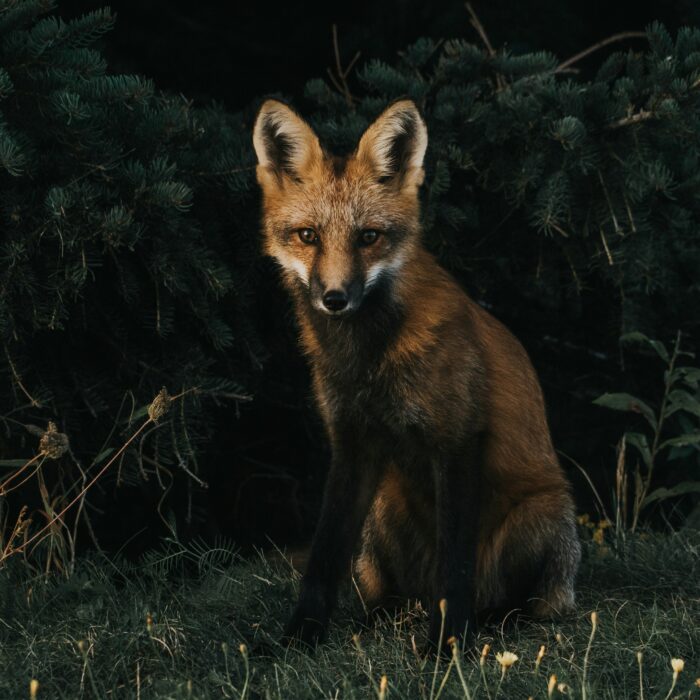You have no items in your cart. Want to get some nice things?
Go shoppingFeed corn. That is what we grow around here. It is a little stunted, and the kernels are not always plumped out like fresh pillows, but it does well enough as bulk cattle feed, pellet chicken feed. Tourists — seeking our thin strips of beaches, or the restored inland, commercialized, historical sites — stop at the swarms of farmers’ markets that pop up in all sorts of knocked-together structures preying at roadside, and buy it by the dozens of ears, load it into green trash bags for the lack of a better collection vessel. Feed corn.

So I was not alarmed when a small stand of corn moved in next door. If it were of the local variety, it surely would be working class corn: a starchy grass, solid nutrition carted around in open trucks, shucked by unselective machines, held in bins. Common. Ordinary. Unassuming. I can understand that. In my own way, that is me.
I have the townhouse on the end, and they are just one inside. Without a prized end unit like mine, they would not get much light unless they spent their time crowded into the backyard. And their backyard is one of these townhouse backyards: one third concreted over, one third utility shed and air-conditioning unit, one third a truce between weeds and wiry grasses. They would have to be careful how they used their land.
Not that it is a bad townhouse, nor a bad townhouse development. Sure, there are too many renters, and a few homes where too many cousins and circuitously connected relatives have moved in with the prime owners or renters or, unfortunately, sub-leasers. Still, in this development, we have a number of couples, a few small families, units with only two cars out front and facades that have been painted within the decade. The houses have floor plans that prove quite livable. Neighbors typically do not fear one another, and a few are quite friendly. Property values are stable.
So, forgive me if I wondered how feed corn could afford the mortgage, or the rent. The tourists simply cannot buy all that much corn, and they have a dizzying selection of road side shacks they can choose to buy from; and, separately, the feed corn bulk market requires numbers bigger than you can grow in a townhouse. That is math. Nothing but math. It isn’t about feed corn moving in next door. I am happy to have earthy, earth-bound neighbors. It is the uppity invaders I cannot stand. It was not so long ago I was blue collar myself. I’m happy to see practical produce, and to wish that it prospers; but I just do not get the numbers.
From my second story back window I can peer over our shared privacy fence and catch them flat-leaved in their tiny backyard. For hours, they will stand there, all at attention, slowly following the sun. I admit: the whole of it fascinates me. When the weather allows, on damp days I will open my window just to hear the rain gently speckle their long, loping leaves. I have always been comforted by that sound. It takes a much harder rain to make that soft, soothing sound into an angry, disturbing noise – a threat that nonetheless leaves nourishment puddling on the concrete.
I have never had much interaction with them. There is little in common between a stand of corn and a manager at a shoe emporium. They are usually out in back most mornings when I leave for work; and are inside, surely under heat lamps and green grow bulbs, by the time I slip back into my driveway. I have bought corn at the farmers markets — even feed corn can be quite good when brought home fresh and immediately boiled in salted water — and I have consumed far too much casual corn syrup; but it is hard to have a relationship with corn before it is harvested. I am no farmer. I do not know the day to day travail of corn; nor its idiosyncrasies; nor its loves; nor what motivation it has for any of its incidental pleasures.
But I continue to wonder how simple, unadorned feed corn could afford the townhouse alongside mine. Not an end unit. No fireplace. Only two baths. A privacy fence around the patch of backyard hardly bigger than a family’s grave. But how much money can feed corn bring in each month?
This sort of question can work on a man. Townhouse neighborhoods are always on the edge. A bad owner here, a bad tenant there, and suddenly you live in a ghetto. And that worry can prey on a man’s sense of self-worth. The health of where you live says a lot about you, about how you have conducted yourself through your past and into your current situation. Too often, it tells your peers everything they need to know. It is no good to let your neighbors get too far behind you, or too far ahead.
So I have been wondering: feed corn?
Much of the recent good weather I have watched the ears next door develop. The shucks have entwined and the silk has draped drunkenly down and the leaves have interlocked and laughed with a full mouth of sun. The stalks grow ever thicker, and I imagine their excess can be harvested for ethanol conversion and thus create yet more income. But I run my simple manager’s mathematics and think: not enough.
I have not taken my decision to act lightly, or without sleeplessness, or with no thumping on the bared side of my house listening to the resounding timber of its worth. End units cost more than internal units. This stand of corn house budget mystery goads me. The not-knowing sharpens me and spurts into my television time and my pre-sleep preparations, and causes me to ponder whether my station — the level I hold as a home owner, this status that I have achieved in my resident, densely crowded field of consistency — is in fact stable, homogenous, and harmonious. You can see I must resolve this.
I am not one to interfere with the aspirations of my neighbors, but you do understand their aspirations can color my own. None of this is about corn. It is about the right sort of corn.
When some auspicious time is spread out like a trap, I will put a pot on the stove and salt some water. My ladder alongside the common privacy fence, I will wait for the drumming of a dreary, overcast day — a day with the lot of them standing lackluster in their backyard, the season nearly done. All I need is one ear, one ear snatched by stuffing myself half-way up the ladder, reaching a hook arm over the fence, finding an ear by feel or by angling one eye barely above the top of the fence — and making the quick tug that will bring that ear away and over to me.
An ear shucked as I slip down the ladder; silk pulled free and left to the writhing wind as I head for my open back door. The alembic of water, inside, will already be boiling. It takes only a few minutes in the cooking, a few minutes in the cooling. And then, with but one bite: is this the ordinary feed corn I have come to know throughout the magical whirls and swirls and turns of my ordinary life; or is this really, really fancy corn?

Ken Poyner
Ken Poyner has lately been seen in “Analog,” “Café Irreal,” “Cream City Review,” “The Journal of Microliterature,” “Blue Collar Review,” and many wonderful places. His latest book of short fiction, Constant Animals, is available on www.kpoyner.com and amazon.com. He is married to Karen Poyner, one of the world’s premier power lifters, and holder of more than a dozen current world power lifting records. They are the parents of four rescue cats, and two energetic fish.




